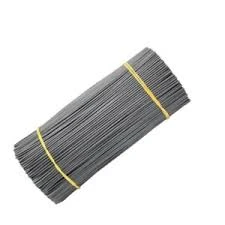Premium Nails for Wood Furniture | Durable & Reliable Fasteners
The Importance of Choosing the Right Nails for Wood Furniture
When it comes to crafting wood furniture, the choice of nails plays a significant role in both the structural integrity and aesthetic appeal of the final product. Unlike other materials, wood requires specific types of fasteners that can withstand the natural expansion and contraction that occurs due to changes in humidity and temperature. In this article, we will explore the various types of nails designed for wood furniture, their characteristics, and best practices for their use.
Types of Nails Used in Wood Furniture
1. Common Nails These are perhaps the most widely used type of nails in woodworking. They are thick, sturdy, and provide excellent holding power. Common nails are ideal for larger pieces of furniture, such as tables and wooden frames, where a strong joint is essential.
2. Finishing Nails Unlike common nails, finishing nails are thinner and have smaller heads, making them perfect for visible areas of furniture where aesthetics matter. These nails can be driven in below the wood surface and filled in for a seamless finish. They are often used in cabinetry, moldings, and other fine woodworking projects.
3. Brad Nails These are even thinner than finishing nails and are ideal for delicate work where minimal wood splitting is required. Brad nails are commonly used in furniture projects involving thin or delicate pieces of wood, such as decorative trim or lightweight frames.
4. Spiral and Ring Shank Nails These types of nails have ridges or a spiral design that enhances their holding power. They are particularly useful in applications where additional grip is needed, such as when fastening pieces that may experience movement over time, like chair joints or outdoor furniture.
nails for wood furniture

Best Practices for Using Nails in Wood Furniture
When constructing wood furniture, selecting the right size and type of nail is crucial. As a general rule, the length of the nail should be at least three times the thickness of the wood being joined. This ensures a strong hold and reduces the likelihood of the wood splitting.
Before nailing, it's beneficial to pre-drill holes, especially for harder woods. Pre-drilling helps prevent the wood from cracking while providing a more precise and accurate alignment for your nails. Additionally, using a nail gun can greatly enhance efficiency and precision in your work, allowing for cleaner finishes and reducing the risk of crooked nails.
It's also important to consider the finish of the nails. If the nail heads will be visible, selecting a finish that matches the furniture can enhance the overall appearance. For hidden nails, such as those used in cabinetry, the finish may be less critical.
Conclusion
In summary, choosing the right nails for wood furniture is essential for ensuring both durability and aesthetic quality. With a variety of options available, woodworkers should carefully consider their project requirements and select the most appropriate type of nails. By following best practices in the selection and application of nails, one can create beautiful and enduring pieces of wood furniture that will stand the test of time. Whether you're a professional carpenter or a DIY enthusiast, understanding the role of nails in furniture making is key to achieving success in your woodworking endeavors.
-
Space-Saving Chain Fence Hacks Vertical Gardening with Cyclone MeshNewsJul.16,2025
-
Innovations in Iron Nail Wire Production for Modern ConstructionNewsJul.16,2025
-
Creative Uses of Wire Netting Fence in Modern Landscape DesignNewsJul.16,2025
-
Barbed Wire Fence Innovations in Anti-Climb TechnologyNewsJul.16,2025
-
Architectural Uses of Umbrella Nails for Aesthetic Roof DesignsNewsJul.16,2025
-
Architectural Uses of Razor Barbed Wire in Secure Urban DesignNewsJul.16,2025




